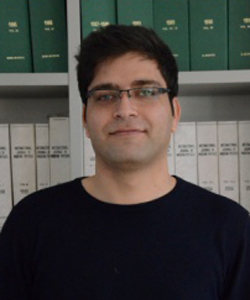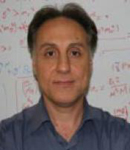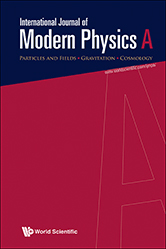

| Newsletter Chinese October/January |

|

|





ICRANet Newsletter
ICRANet简报
2015年10月—2016年1月
摘要
- 新闻“罗伊-克尔荣获2016年 Crafoord 奖” - 近期发表的论文 - 我们的双星驱动极超新星(BDHNe)术语出现在《天堂电影院》导演执导的电影中 Giuseppe Tornatore - 与伊朗的科学合作 - 首届哥伦比亚-ICRANet Julio Garavito Armero会议 - 首届Sandoval Vallarta Caribbean会议 - 新的博士论文答辩和学位 - IRAP PhD项目的新博士生 - 最近的会议论文集
新闻“罗伊-克尔荣获2016年 Crafoord 奖”

新西兰教授、数学家和物理学家罗伊-克尔是 ICRANet的Lifshitz讲席教授 ( Lifshitz Chair), 最近他与Roger Blandford 因"他 在旋转黑洞及它们的天体物理应用中基础性 工作"而荣获2016年 Crafoord 奖。 ICRANet是一一个国际组织。它的成员包括四 个国家和三所大学及研究中心。这些成员是 亚美尼亚共和国、巴西联邦共和国、意大利 共和国、梵蒂冈、亚利桑那大学和 斯坦福大学及国际相对论天体物理 中心。 Crafoord Prize 奖励和促进在那些由诺贝尔奖奖项覆盖传统研究之外科学领域的研究者。这个久负盛名的奖项,大约一一百万欧元,由国王和瑞典女王在每年五月份期间颁发。从 1982年该奖项建立之初迄今,只有六位天文学家或天体物理学家获得Crafoord Prize奖项 的殊荣. 
作为ICRANet的 Yevgeny Mikhajilovic Lifshitz讲习教 授罗伊-克尔2010年在ICRANet尼斯中心Villa Ratti举行 的IRAP博士学校上讲课 1963年,罗伊-克尔教授发现了一一个爱因斯坦广义相对论方程中旋转物体的精确解:“这 个数学解 - ICRANet主任雷莫-鲁菲尼教授回忆到 - 它的应用允许我们在物理学领域,天文 和相对论天体物理学得到本质上的巨大提高:它的应用拓展到微观物理的基本粒子,如从电 子的结构到黑洞的天体物理学,当出现在一一个恒星演化结束时,达到在宇宙中最高能的过 程,如伽玛暴和活动星系核,在黑洞和极大黑洞,高达数十亿倍我们的太阳的亮度,它斗占 主导地位。”这就是雷莫-鲁菲尼与约翰-惠勒推导用过的克尔数学解,引入它来描述基本的 物理过程,给它们命名为“黑洞”。”黑洞“一一词被翻译成全世界所有的不同语言。(Physics Today, 30, 1971). 从那时起,克尔解引出了无数的科学发展,这些科学发展成就了今天的 Crafoord Prize. 这些主题随后被Blandford和Znajek (MNRAS, 179, 433, 1977)详细研究,它们的研 究是从鲁菲尼的Wilson 工作(Phys. Rev. D 12, 2959,1975)而发展的。 2006年,罗伊-克尔在每三年在不同国家举行的国际相对论天体物理大会上被授予马歇尔- 格罗斯曼奖(见相关维基百科和ICRANet的MG11奖项手册ICRANet booklet on MG11 Award)。 罗伊克尔教授曾经在ICRANet的IRAP PhD项目课程上授课。IRAP PhD项目首个由六个欧洲国家(德国、意大利、瑞典和法国等)参与,由ICRANet创建并有尼斯大学进行国际协调的国际联合博士项目。 2016年1月30日星期日,ICRANet所址对外开放,在上午十点到十三点之间会有罗伊-克尔通过Skype视频参与的会议。
近期发表的论文
Neutron-Star–Black-Hole Binaries Produced by Binary-Driven Hypernovae
Chris L. Fryer, F. G. Oliveira, J. A. Rueda, and R. Ruffini Phys. Rev. Lett. 115, 231102 – Published 4 December 2015
It seems that the formation of a stellar mass BH does not occur directly from the collapse of a single massive star but instead it follows a much longer path in a sequence of events marked by a succession of processes of gravitational collapse, and finally leading to the actual birth of a BH: 1) the star of larger mass is evolving on a time scale much shorter in a first process of gravitational collapse, leading to a SN and the formation of a NS; 2) the binary system composed of a NS and a massive star evolves toward a binary system with a shorter and shorter orbital period, until also the second massive star explode in a SN; 3) in this process, a second NS is formed and part of the material expelled by the SN is engulfed in the accretion on the first NS; 4) this accretion can lead the accreting NS to reach its critical mass and form a BH, and during this induced gravitational collapse (IGC) process, a GRB is emitted.

The details of this complex astrophysical process have been studied and developed in a group of astrophysicists, theoretical physicists, and experts in general relativity working with the most advanced numerical computational techniques in the ICRANet Seats.
It was not clear if, after the violent SN explosion with a large loss of mass, the NS (remnant of the SN) and the just born BH could indeed survive as a binary system. From the traditional work on binary systems, it was well known that, if a SN explosion leads to a loss of mass larger than 50% of the initial total mass of the system, this would become unbound leading to the expulsion of the stars in opposite directions. In a paper just published in the prestigious scientific journal "Physical Review Letters" http://journals.aps.org/prl/abstract/10.1103/PhysRevLett.115.231102, Fernanda Gomez Oliveira, a young Brazilian student of the IRAP-PhD in Rome, with Chris Fryer of LANL and her directors of PhD thesis Jorge Rueda and Remo Ruffini, have shown that this result of classical astronomy is actually superseded when relativistic conditions are duly taken into account. They have shown explicitly that in this IGC phenomenon a new binary system composed by a NS and a BH can be formed even in the case when the mass ejected is larger than 50%! One of the most fascinating conclusions is that the orbits of these new binary systems, in view of the emission of gravitational waves, will shrink with time and, in some ten thousand years, will lead to a necessary coalescence of the two objects. This new phenomenon will culminate in the formation a single new BH of approximately five solar masses. These authors predict that a new GRB of extremely short duration will then be emitted and, for this reason, they have baptized such a new system as "ultrashort GRB". This is a totally new possibility predicted by the IGC paradigm: for the first time, in the field of relativistic astrophysics, it is proposed not only the explanation of the GRB phenomena but that a GRB can lead itself to another GRB.
我们的双星驱动极超新星(BDHNe)术语出现在《天堂电影院》导演执导的电影中

“超新星,极超新星和双星驱动的极超新星”的系统概念最早由雷莫-鲁菲尼在ICRANet(简称BdHNe)提出。该概念成为Giuseppe Tornatore新电影中的重要元素,他是知名的奥斯卡获奖电影“天堂电影院”的导演。
Giuseppe Tornatore, 是意大利著名的电影导演和编剧家,他编剧和执导了“天堂电影院”并且和雷莫-鲁菲尼教授是朋友。最近,他执导了一部关于天体物理学和爱、主题为“通信”的电影,鲁菲尼教授是该电影的科学顾问。这部电影内容是关于一个年轻的天体物理学博士研究生(Olga Kurylenko)和她与资深的天体物理学教授(Jeremy Irons)的友情。影片的最后,该学生博士答辩的题目就是“超新星,极超新星和双星驱动极超新星”。 
Asiago telescope
BdHNe是一个天体物理学术语,它描述了伽玛暴-超新星 (GRB-SNe)联合事件,它此前被人们认为是两个现象。鲁菲尼教授和他的研究组首次提出BdHN的名称和概念,见 https://en.wikipedia.org/wiki/ICRANet#Scientific_research_at_ICRANet. 更多的技术细节可参考ApJ Letters 793, 36 (2014) 和 A&A 565, L10 (2014)。同样,在此前的ICRANet简新闻中你可以看到“双星驱动极超新星”概念以标题的形式首次出现著名物理期刊"Physical Review Letters"中,改论文由鲁菲尼教授和他的合作者完成,详见 http://journals.aps.org/prl/abstract/10.1103/PhysRevLett.115.231102.

Giuseppe Tornatore, Olga Kurylenko and Jeremy Irons
与伊朗的科学合作
访问博士研究生
伊朗政府的教育部为伊朗博士研究生提供为期六个月访问国外科研机构的财政支持,以使伊朗的博士生获得物理学和天体物理学的强化训练和经验,以及建立与世界领先的科研机构的联系。 ICRANet拥有一些伊朗学生,他们参加由ICRANet主办的博士生学校和科学会议。从2011年起,已经有7位伊朗学生访问了ICRANet佩斯卡拉中心。
大多数学生,如Eshan Bavarsad, Rohollah Mohammadi Iman Motie和Soroush Shakeri (及他学习凝聚态物理的妻子)来自伊斯法罕工业大学。其他两名伊朗博士生已申请对ICRANet佩斯卡拉中心进行访问,他们的申请正在被审核中。 Rohollah Mohammadi已获得ICRANet经费支持多访问半年多。
另外两名从伊斯法罕工业大学来的两个伊朗博士Saghar Batebi和Seddigheh Tizchang从2014年12月至2015年五月在ICRANet设在佩斯卡拉的总部访问了六个月。在这访问学习中,她们熟悉了ICRANet的科研活动并增加了对伽玛暴的知识。她们的合作者与ICRANet科学家们在2015年7月的MG14会议提交了两个报告: S. Batebi; S. Tizchang; R.Mohammadi; R. Ruffini; S. S. Xue, The generation of circular polarization of GRB, MG14. S.Tizchang, S.Batebi, R. Mohammadi, R. Ruffini, G. Vereshchagin, S.-S. Xue, Interaction of high energy photons with the background radiation in the universe, MG14. 
Seddigheh Tizchang and Saghar Batebi
他们在ICRANet佩斯卡拉中心访问的过程中,这些所有的伊朗博士生都已经参与到学习和研究黑洞和中子星物理,伽玛暴现象,光子透明度和极化及与宇宙微波背景辐射和宇宙中微子背景的相互作用。他们的研究结果发表于科学期刊。有些学生在返回伊朗之后与ICRANet继续进行科学合作。
来自伊朗另外两名学生Zeinab Khorrami和Rahim Moradi分别在2012年和2014年被IRAP PHD博士项目录取 www.icranet.org/irap-phd 为ICRANet三年制博士生。 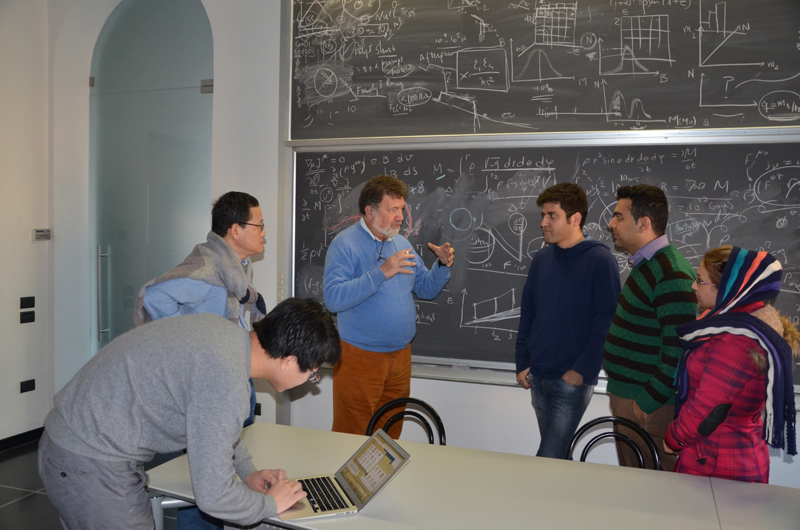
From left to right: She-Sheng Xue, Wang Yu, Remo Ruffini, Rahim Moradi, Soroush Shakeri and Razie Pakravan
和伊朗学生有关的发表论文:
J. Khodagholizadeh, R. Mohammadi and S.-S. Xue, "Photon-neutrino scattering and the B-mode spectrum of CMB photons", the Rapid communication section of Physics Review D 90, 091301(R) (2014). R. Mohammadi, I. Motie, and S.-S. Xue, "Circular polarization from linearly-polarized-laser-beam collisions", Phys. Rev. A 89, 062111 (2014). R. Mohammadi and S.-S. Xue, "Laser photons acquire circular polarization by interacting with a Dirac or Majorana neutrino beam or cosmic background", Phys. Lett. B 731 (2014) 272. I. Motie and S.-S. Xue, "High energy neutrino oscillation in discrete space-time", International Journal of Modern Physics A Vol. 27, No. 19 (2012) 1250104. I. Motie and S.-S. Xue, "Euler-Heisenberg Lagrangian and CMB photon circular polarization", European Physics Letter, 100, 17006, (2012). 访问教授
首届哥伦比亚-ICRANet Julio Garavito Armero会议
Bucaramanga, 11月23日-25日, Bogotá, 11月26日-27日
该1JG会议已经成为联合国教科文卫组织国际光年中,ICRANet举办庆祝活动的一一部分,同 时也庆祝纪念爱因斯坦方程100周年,以及相对论天体物理的五十周年。它属于在罗马从7 月12日至18日召开的十四马塞尔·格罗斯曼会议卫星会议(MGXIV)。
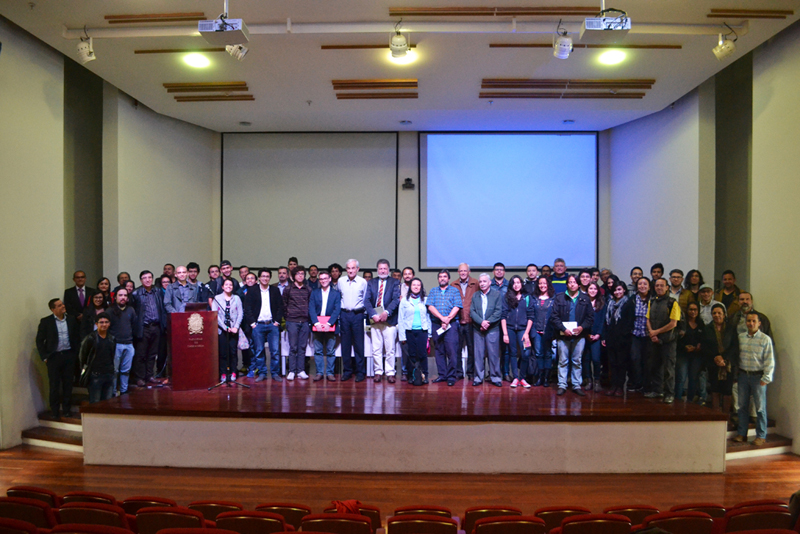
该会议的目的在于汇集中子星、黑洞、超新星、引力波和高能天体物理及宇宙学领域在理论 和观测两方面的知名科学家,来来研讨在引力和相对论天体物理学的当前状态和未来发展方 向。该会同时讨论了ICRANet在拉丁美洲的活动和科学合作,特别讨论了在哥伦比亚的的情
形。
首届JG会议由ICRANet, Universidad Industrial de Santander (UIS), Universidad Nacional de Colombia (UNAL), Universidad de Los Andes (Uniandes), Universidad del Valle (Univalle), Universidad de Antioquia (UdeA), Centro Internacional de Física (CIF) of Bogotá和Planetario de Bogotá联合组织。 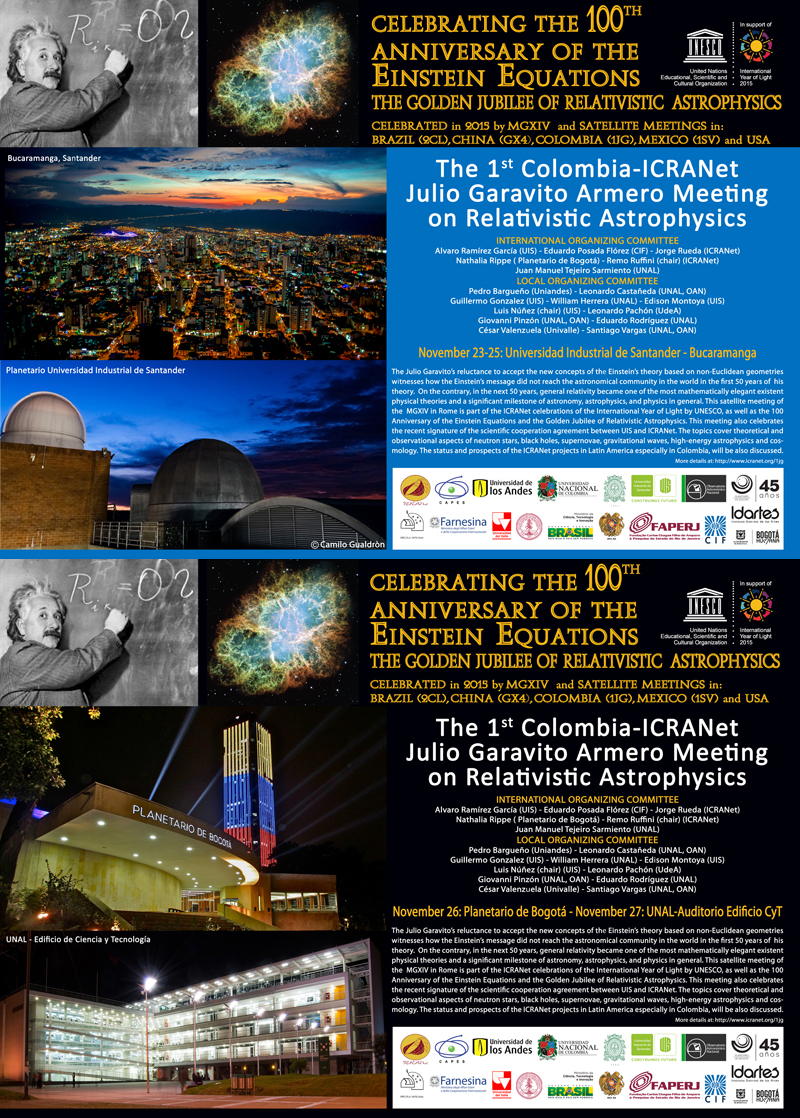
本次会议从11月23日开始,到11月25日在Bucaramanga的UIS举行。会议的第一一天讨论 了“爱因斯坦方程精确解应用于天体物理”并限定了主题“经典和量子引力”。在第一一天结束 时,来自UIS乐队EMUIS举行了一一场有趣的表演,表现了哥伦比亚的所有不同自然区域的生 活韵律。会议第二天的主题是“超新星”,“中子星”,“天体物理中的数值模拟”和“拉美高能天 体物理的未来观测项目”。为期三天的会议中,茶歇时间的墙报给本科生和研究生提供了让 他们对所有参会者展示研究成果的机会。
在该周剩下的时间内,即从11月26-27日,1JG会议移动到波哥大召开。26号的会议由雷 蒙-鲁菲尼教授,Félix Mirabel 教授和Fernando Izaurieta教授的公众报告开始。11月27日的会议在UNAL举行。与会者讨论了在拉丁美洲,黑洞、高能天体物理、大尺度结构、暗物 质、中子星、伽玛暴和量子引力等天体物理观测项目。在波哥大,继续进行了讨论包括哥伦 比亚在内的拉美国家可能作为进入ICRANet会员国的会议。 会议详情请参考: http://www.icranet.org/1jg/ 在哥伦比亚的会议利用了意大利研究的成果: Colombia, un convegno per i 100 anni delle equazioni einsteiniane: https://www.researchitaly.it/innovitalia/eventi/colombia-un-convegno-per-i-100-anni-delle-equazioni-einsteniane/
首届Sandoval Vallarta Caribbean 会议
墨西哥城(墨西哥) – 11月30日 - 12月3日, 2015 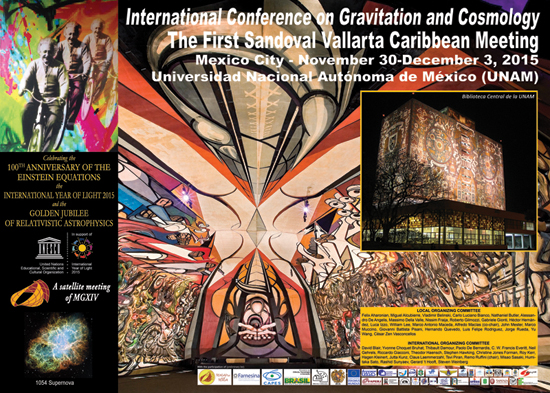
会议从2015年11月30日到12月3日召开,以庆祝爱因斯坦方程诞辰100周年和讨论未来 在墨西哥的ICRANet科学活动。它跟随2015年7月在罗马举行的MGXIV会议,覆盖了在X, γ射线和UHECR观测活动,在中子星,黑洞,引力波和宇宙学的相对论天体物理理论方面进 展。同时讨论了巴西科学数据中心(BSDC)的发展:从河内及河外源和在时间上追溯宇宙 中第一一代结构的形成。还讨论了墨西哥参与ICRANet项目的状态和前景,IRAP博士项目, EMJD计划,相关的博士后,以及所有的ICRANet中心内的高级研究领导人员。
国际组委会主席是Ruffini教授( ICRANet ) 地 方 组 委 会 主 席 是 Alfredo (UAM) 会议网页: http://www.icranet.org/1sv/ 墨西哥会议同样利用了意大利研究成果: ICRANet in Messico: conferenza su gravitazione e cosmologia: https://www.researchitaly.it/innovitalia/eventi/icranet-in-messico-conferenza-su-gravitazione-e-cosmologia/
新的博士论文答辩和学位
Maxime Enderli, "Binary Progenitors of GRBs in the Fireshell Model", 2015年 12月9日在罗马智慧大学答辩
Commission members: Antonio Capone (University of Rome "la Sapienza"), Massimo Della Valle (INAF Capodimonte Observatory), Luigi Stella (INAF Rome Observatory)
The works presented in this thesis share a common scope. Each of them plays a part in the establishment of a new classification of gamma-ray bursts based on results obtained with the alternative fireshell model. Due to the extreme nature of GRBs, it is noteworthy that a better understanding of these phenomena may yield important developments in the fields of relativistic astrophysics and cosmology.
According to the classification that we obtain, all GRBs – short and long, energetic and less energetic – are outcomes of binary interactions. The binary nature of short and long GRBs nevertheless differs significantly. Indeed, short GRBs are understood as binary compact object mergers while long GRBs are viewed as the products of the interactions of a neutron star and an evolved stellar core undergoing a supernova explosion. Specifically, we report on the following results: 
The introduction of the Induced Gravitational Collapse paradigm leads to the idea of binary GRB progenitors. This paradigm applies to energetic long GRBs associated to supernovae, and stems from the identification of physically different episodes in the γ-ray observations of several GRBs. The sequence of events in an IGC event (also referred to as a binary-driven hypernova) is detailed, and we characterize each of the four episodes that we identify. In the IGC framework, the first episode is due to the onset of a supernova and to the accretion of the ejecta onto a companion neutron star. The second episode is produced by the collapse of this neutron star to a black hole. The third episode, which encompasses emission from the SN ejecta, the SN shock breakout, and the new neutron star remnant of the supernova, appears to follow a regular behavior: the lightcurves of the late X-ray emission show evidence for overlapping and nesting features. Finally, the fourth episode consists of the supernova peak optical signal. We also report on a work that aims at characterizing IGC events through an analysis of their joint X-ray and optical spectral energy distributions. These initial results are expanded to several remarkable GRBs to which we apply the IGC paradigm. Thus the cases of GRB 130427A – a very energetic yet relatively nearby event –, of GRB 090423 – the farthest GRB with a spectroscopic redshift to date –, and of GRB 970828 are summarized. In addition to the study of the long GRB population, the understanding of short GRBs is improved through the analysis of energetic short events. The prototypical GRB 090227B serves as a model for the cases of GRB 140619B and GRB 090510, which are understood as binary neutron star mergers leading to the formation of black holes. In particular, GRB 090510 bears remarkable peculiarities that we interpret in the framework of the fireshell model; these peculiarities lead us to conclude that the newborn black hole may be endowed with a high spin. An important feature of the fireshell model is its energy source: originally, electromagnetic energy extraction from a Kerr-Newman black hole was considered and found to be able to deliver up to 1055 erg in a few seconds for a 10 solar mass black hole. Thus, whether gravitational collapse to a black hole occurs or not is of paramount importance regarding the energetics of a GRB. As a consequence of this dichotomy, both short and long GRBs are further divided in two families characterized by the formation – or lack thereof – of a black hole during the course of a GRB. The classification scheme of GRBs that we obtain may be summarized by the figure. List of publications: 1. Ruffini, R.; Muccino, M.; Bianco, C. L.; Enderli, M.; Izzo, L.; Kovacevic, M.; Penacchioni, A. V.; Pisani, G. B.; Rueda, J. A.; Wang, Y., “On binary-driven hypernovae and their nested late X-ray emission”, 2014, A&A , 565, L10; 2. Ruffini, R.; Izzo, L.; Muccino, M.; Pisani, G. B.; Rueda, J. A.; Wang, Y.; Barbarino, C.; Bianco, C. L.; Enderli, M.; Kovacevic, M., “Induced gravitational collapse at extreme cosmological distances: the case of GRB 090423”, 2014, A&A, 569, A39; 3. Kovacevic, M.; Izzo, L.; Wang, Y.; Muccino, M.; Della Valle, M.; Amati, L.; Barbarino, C.; Enderli, M.; Pisani, G. B.; Li, L., “A search for Fermi bursts associated to supernovae and their frequency of occurrence”, 2014, A&A, 569, A180; 4. Ruffini, R.; Wang, Y.; Enderli, M.; Kovacevic, M.; Bianco, C. L.; Muccino, M.; Penacchioni, A. V.; Pisani, G. B.; Rueda, J. A., “GRB 130427A and SN 2013cq: A Multi-wavelength Analysis of an Induced Gravitational Collapse Event”, 2015, ApJ, 798, 10; 5. Ruffini, R.; Muccino, M.; Kovacevic, M.; Oliveira, F. G.; Rueda, J. A.; Bianco, C. L.; Enderli, M.; Penacchioni, A. V.; Pisani, G. B.; Wang, Y., “GRB 140619B: a short GRB from a binary neutron star merger leading to black hole formation”, 2015, ApJ, 808, 190; 6. Ruffini, R.; Izzo, L.; Muccino, M.; Rueda, J. A.; Barbarino, C.; Bianco, C. L.; Dereli, H.; Enderli, M.; Penacchioni, A. V.; Pisani, G. B.; Wang, Y., “Induced Gravitational Collapse in the BATSE era: the case of GRB 970828”, 2015, Astronomy Reports, 59, 626; 7. Enderli, M.; Ruffini, R.; Aimuratov, Y.; Bianco, C. L.; Kovacevic, M.; Moradi, R.; Muccino, M.; Penacchioni, A. V.; Pisani, G. B.; Rueda, J. A.; Wang, Y., “GRB 090510: a genuine short-GRB from a binary neutron star coalescing into a Kerr-Newman black hole”, submitted to ApJ.
Eckhard Strobel, "Critical and overcritical electromagnetic fields", 2016年1月 13日在罗马智慧大学答辩
Commission members: Fabio Sciarrino (Sapienza University), Ralf Schützhold (Universität Duisburg-Essen), Holger Gies (Friedrich-Schiller-Universität Jena)
We semiclassically investigate Schwinger pair production for two component electric fields depending on time.
To do so we solve the Dirac equation for two-component fields using a scattering ansatz inspired a Wentzel–Kramers–Brillouin approximation. Studying the same fields using the world-line instanton approach we find that the methods agree. In general the results show that for two-component fields the spin distribution of produced pairs is generally not 1:1. As a result the pair creation rates of spinor and scalar QED are different even for one pair of turning points. For rotating electric fields, the pair creation rate is dominated by particles with a specificspin depending on the sense of rotation for a certain range of pulse lengths and frequencies. We present an analytical solution for the momentum spectrum of the constant rotating field. 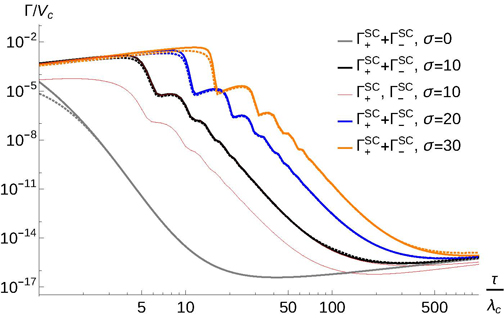
Figure 1. Total particle number per Compton volume of the rotating Sauter pulse for different pulse parameters. The dotted lines show the results of the DHW method. We find that the results agree in an intermediate range of the pulse length τ depending on the number of rotations σ. For small τ the semiclassical approximation breaks down, whereas for long pulses the DHW method is limited by errors in the numerical integration. We also present a comparison to a method based upon the real-time Dirac--Heisenberg--Wigner (DHW) formalism for pulsed rotating electric fields. For the semiclassical method we propose to either perform numerical calculations or an additional approximation based on an analytical solution for the constant rotating field. We find that both numerical methods are complementary with respect tocomputation time as well as accuracy. The approximate method shows the same qualitative features while being computationally much faster. In addition we study the fermionic Schwinger effect in two-dimensional de Sitter spacetime. For the constant electric field solutions for the Dirac equation can be found and the number of pairs can be computed using the standard Bogoliubov method. The solutions are used to compute the expectation value of the induced current. Comparing these results to similar studies for bosons, we find that while the results agree in the semiclassical limit, they do not generally agree. In particular, there is no occurrence of a strong current for small electric fields. Furthermore, we generalize the result that for vanishing electric or magnetic fields the strong-field behavior of the one-loop Euler-Heisenberg effective Lagrangian of quantum electro dynamics is logarithmic for different limits of the Lorentz invariants. The logarithmic dependence can be interpreted as a lowest-order manifestation of an anomalous power behavior of the effective Lagrangian of QED, with critical exponents δ=e2/(12π) for spinor QED, and δS=δ/4 for scalar QED. The thesis is based on following publications: 1) Alexander Blinne and Eckhard Strobel "Comparison of semiclassical and Wigner function methods in pair production in rotating fields", accepted for puplication in Phys. Rev. D (2016), 2) Clément Stahl, Eckhard Strobel, and She-Sheng Xue. "Semiclassical fermion pair creation in de Sitter spacetime", Phys. Rev. D 93 (2016) 025004 3) Eckhard Strobel and She-Sheng Xue, "Semiclassical pair production rate for rotating electric fields", Phys. Rev. D 91 (2015) 045016 4) Eckhard Strobel and She-Sheng Xue. "Semiclassical pair production rate for time-dependent electrical fields with more than one component: WKB-approach and world-line instantons", Nucl. Phys. B 886 (2014) 1153--1176 5) Hagen Kleinert, Eckhard Strobel, and She-Sheng Xue. "Fractional effective action at strong electromagnetic fields", Phys. Rev. D 88 (2013) 025049.
IRAP PHD博士项目的新博士生
以下录取的学生获得罗马智慧大学的奖学金
(字母排序): -) Melon Fuksman Julio David (Argentina) -) Primorac Daria (Croatia) 以下学生由国际项目奖学金支持 (字母排序): -) Almonacid Guerrero William Alexander (Colombia) -) Gardai Collodel Lucas (Brazil/Hungary) -) Gutierrez Saavedra Julian Steven (Colombia) -) Isidoro dos Santos Júnior Samuel (Brazil) -) Meira Lindolfo (Brazil) -) Silva de Araujo Sadovski Guilherme (Brazil) -) Uribe Suárez Juan David (Colombia) -) Vieira Lobato Ronaldo (Brazil)
近期的论文集
|
|||||||||||||||||||
|
||



